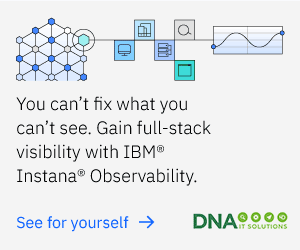The notion of disaggregation — separating the operating system and applications from the underlying hardware — has always been a conundrum for Cisco. In a nutshell, why would the company risk losing all of the millions of dollars in development and the key networking features tied up in current Cisco hardware and software packages?
But in the new world of all-things software in which Cisco plans to be king, the disaggregation strategy is gaining momentum.
Service provider steps
Now, the company has taken things a step further in announcing a variety of disaggregation steps enterprise and service provider customers could be interested in.
For the enterprise Cisco bolstered its IOS XE software with modelling software called Cisco Validated Design (CVD) Configuration Management Templates for IOS XE which automates Cisco reference design deployment through the use of declarative configurations, the company said.
“The templates provided in this repository let users provision portions of various CVDs. One such example is leveraging popular open source configuration management tools to drive declarative configuration, reducing ‘fat finger’ mistakes that can be made from transcribing documentation into device configuration,” Cisco said.
IOS XE is Cisco’s Linux-based operating system that Cisco says can be run in multivendor virtualised environments.
Cisco said the first CVD Configuration Management Template is an Ansible Playbook for Campus LAN Layer 2 Access. It is available for download now from the Cisco DevNet GitHub repository free of charge, Cisco said.
Apps hosting on Catalyst 9000 switches
Cisco also rolled out Application Hosting capabilities for Catalyst 9000 switches and its ISR/ASR routers. This support lets various Cisco and third-party applications to be hosted in Linux containers (LXC) or as a Kernel-based VM (KVM) in combination with IOS XE 16.8.1 which comes out this month.
“We are already seeing customers use these early capabilities to run applications for network analytics, security, network operations workflows and IoT on the network infrastructure,” Cisco said.
For its data centre customers, Cisco said it will now offer a number of portability options for its Nexus switches and the Nexus Operating System (NX-OS) — including the Cisco Cloud Scale Switch Abstraction Interface (SAI).
“SAI lets customers the freedom run the network operating system of their choice on our SAI-ready Nexus platforms. Microsoft and other web-scale customers are now running their Sonic operating system on these Nexus 9200/9300 platforms,” Cisco stated.
In addition Cisco said it is now possible to run its Nexus Operating System (NX OS) on third-party hardware platforms — independent of Nexus switches. Cisco also now offers a virtual NX OS that “will let customers simulate new features during upgrades through the software upgrade impact on existing tooling environment for their actual large-scale topologies.”
“Cisco continues to deliver open APIs to our networking devices, integration with popular automation frameworks like Ansible, Puppet or Chef, and programming via any set of convenient programming languages, including Python. While these APIs obviously play a critical role for our service provider and web-scale customers, openness also means having flexibility to choose the hardware and software combinations that best meet their needs,” wrote Roland Acra, Cisco Senior Vice President & General Manager, Data Centre Networking in a blog announcing the new features.
Disaggregation for carriers
For service providers Cisco completely disaggregated its carrier-grade IOS XR operating system, meaning that the OS can now run on Cisco or merchant silicon switches and routers. The system can also now run on x86 servers as virtualised software across public clouds and “specific” third-party devices, Cisco stated.
Certainly in the service provider world disaggregation has forced Cisco’s hand. Indeed the company said that over the past few years, software/hardware disaggregation has been gaining traction within the networking industry for a number of reasons including:
- Hyperscale web providers are pushing for disaggregated solutions for their data centres
- Service providers have expressed their willingness to move towards disaggregated solutions
- Original Design Manufacturers (ODMs) now sell hardware directly to customers
- Niche vendors are selling software-only packages
“The vast majority of our customers prefer to buy complete systems with world-class support from Cisco. Most desire a level of simplicity rather than the burden of having design and development teams creating and stitching together hardware and software,” said Cisco.
“Becoming systems integrators requires significant long-term costs for organisations. But there are certain types of customers — service providers and web scale companies for instance — with unique automation and scaling demands for which disaggregating hardware from software can offer fundamental advantages.”
IDG News Service







Subscribers 0
Fans 0
Followers 0
Followers